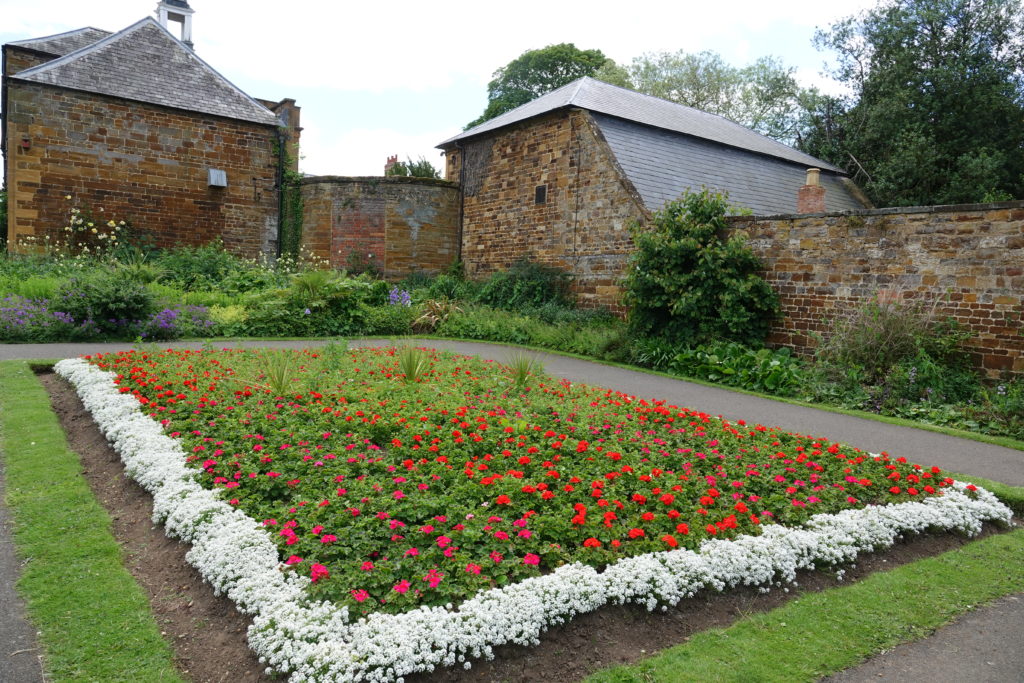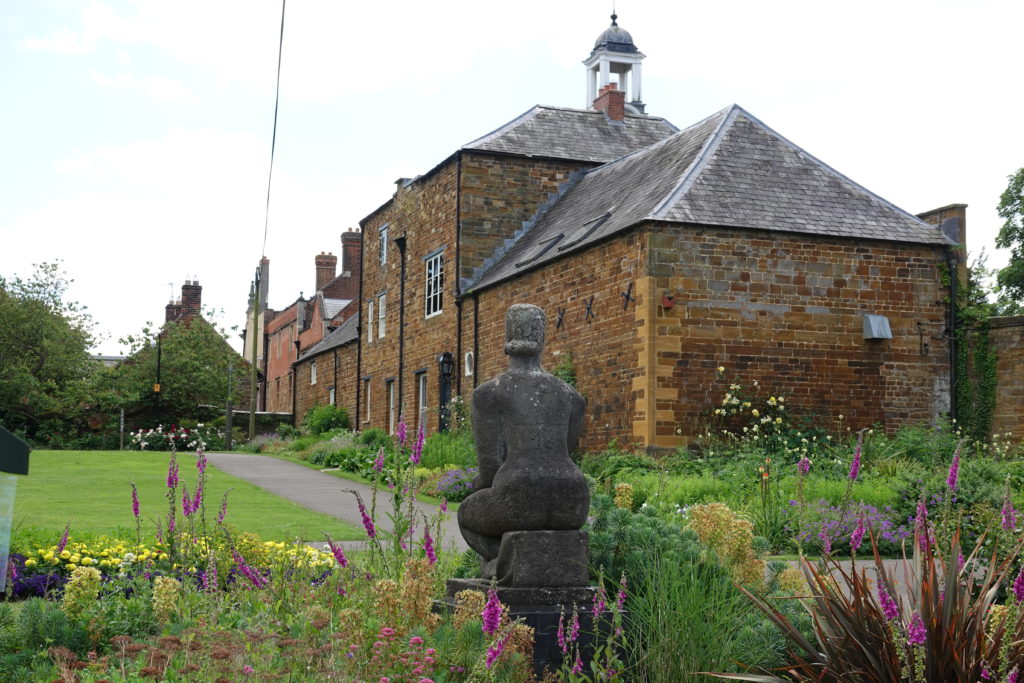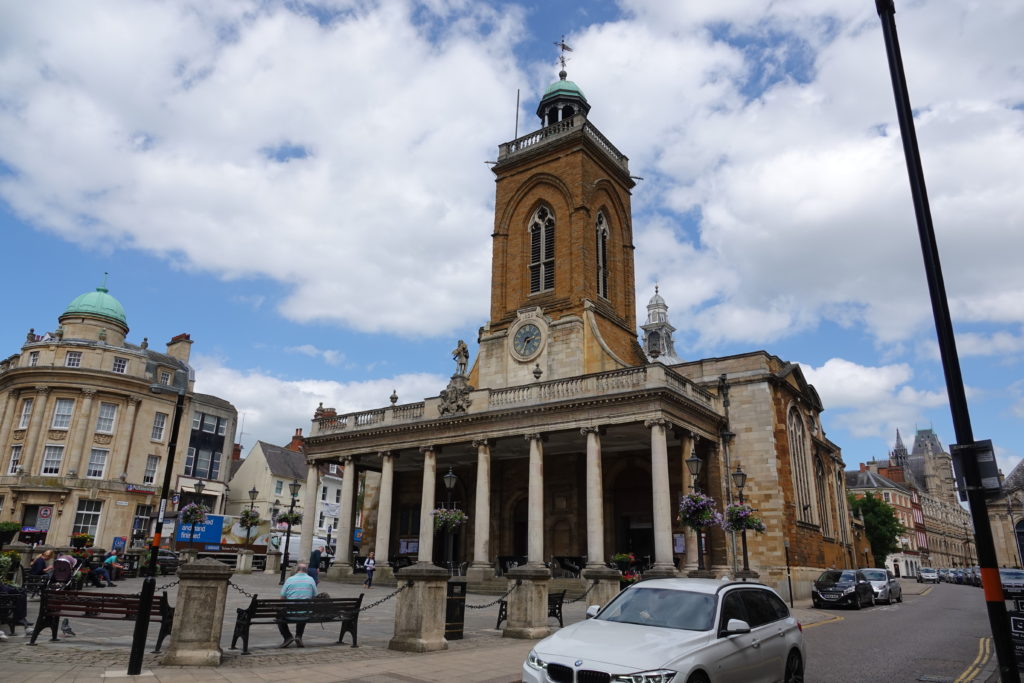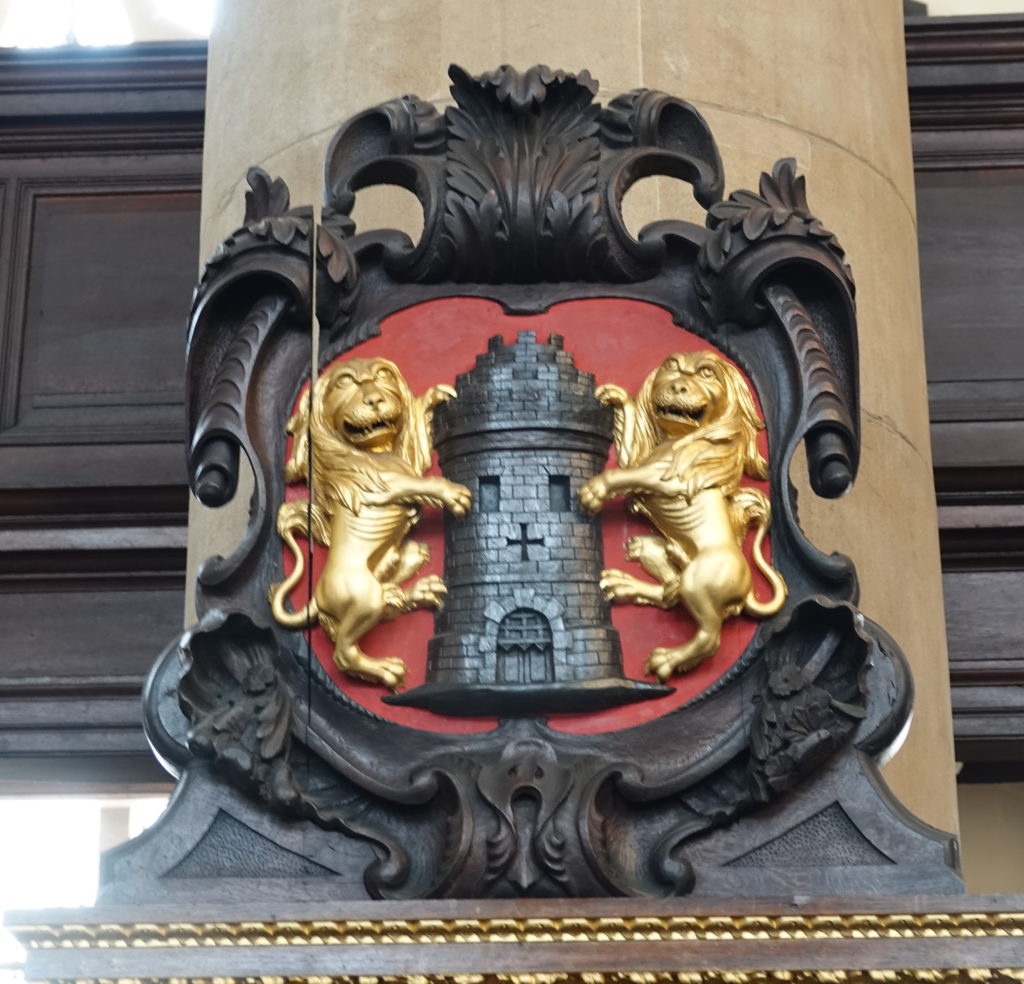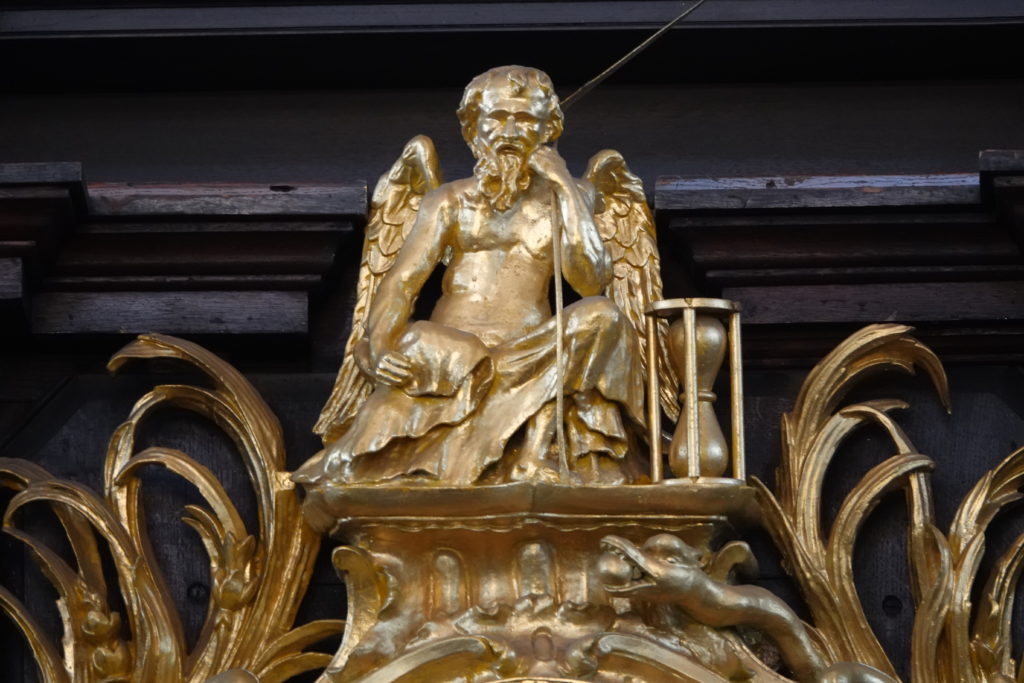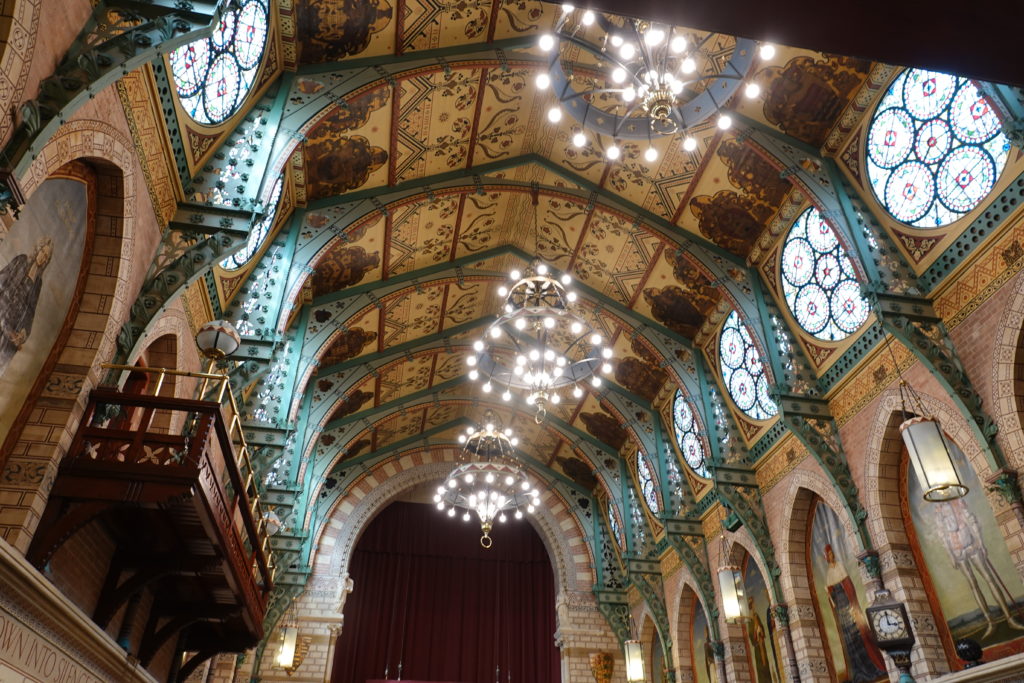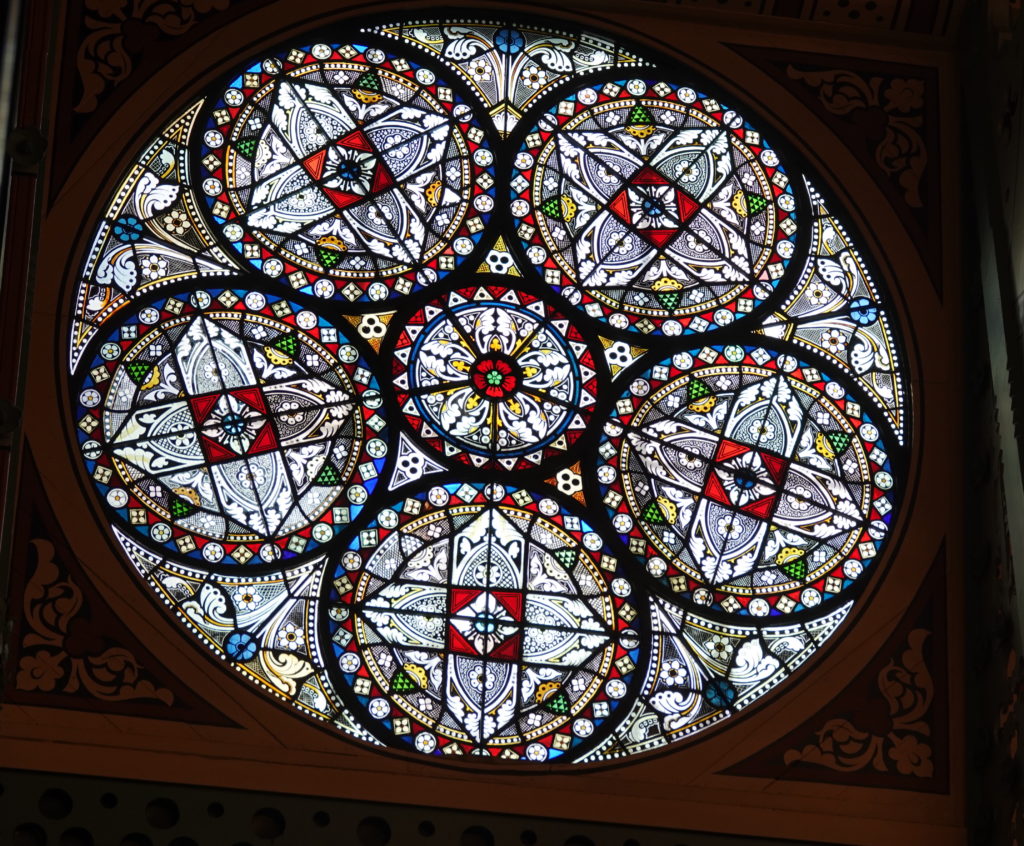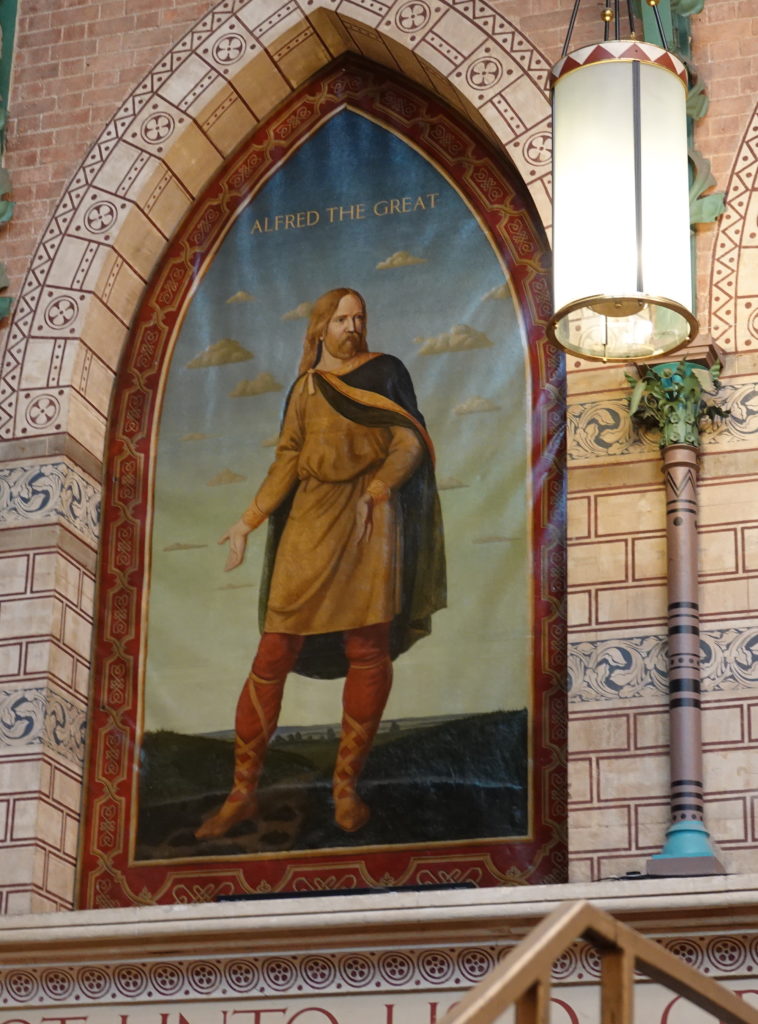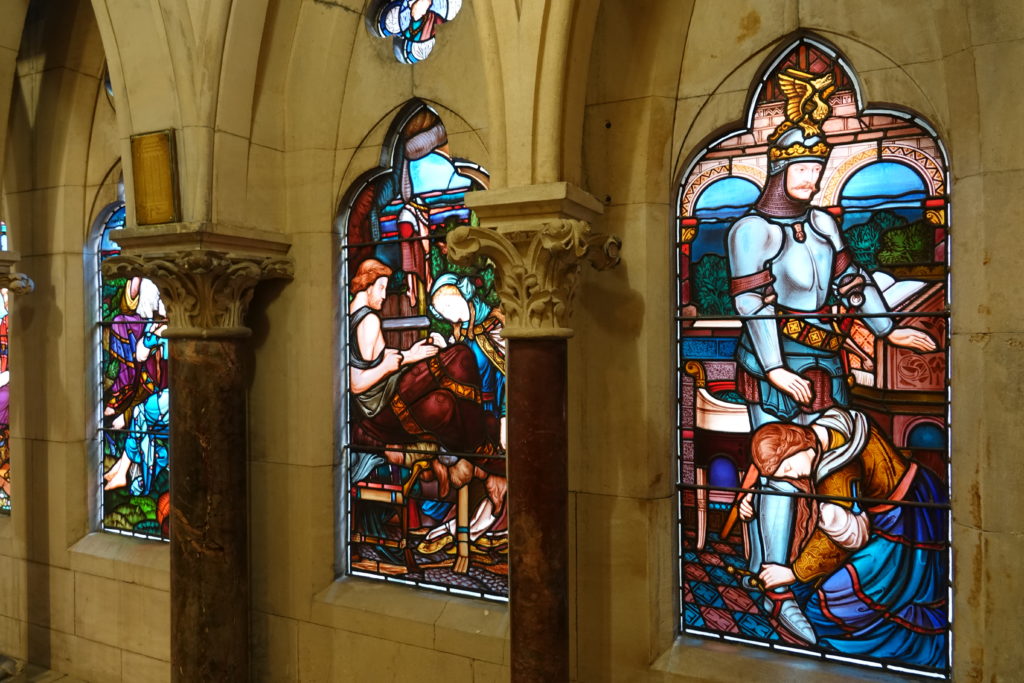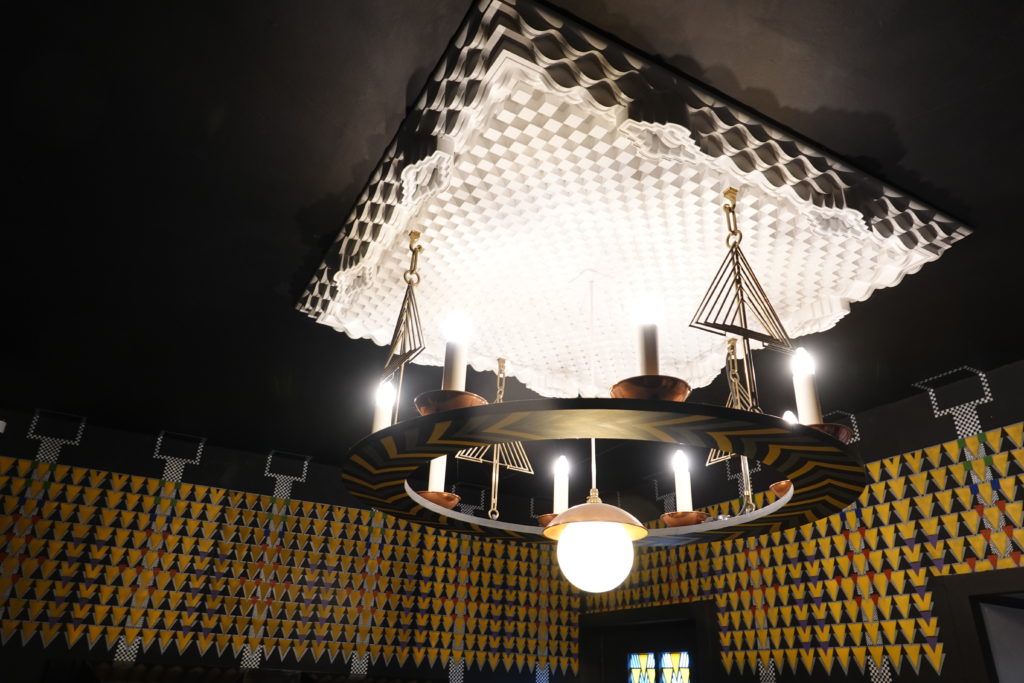Northampton
Gentle reader, I will spare you the Battle of Northampton. There is too much else to write about today, that even though the Battle of Northampton was one of those wonderful convoluted Wars of the Roses conflicts with people changing sides in the middle of the battle, kings captured, whole families massacred, and even a prolonged negotiation beforehand (think Game of Thrones only much more complicated), there is too much else today to write about today. The Battle of Northampton will have to wait till we are on our way back.
This morning we cruised the final few miles (and three locks) to join the River Nene in Northampton. After I had bought a license to take a boat on the rivers of East Anglia and Paula had had her second cup of tea, we set off for Delapré Abbey, which was first a nunnery, then a stately home, then an abandoned property, and has recently reopened as a museum and event center.

Unfortunately there was an event on today so we couldn’t go inside, but the walled garden is lovely.
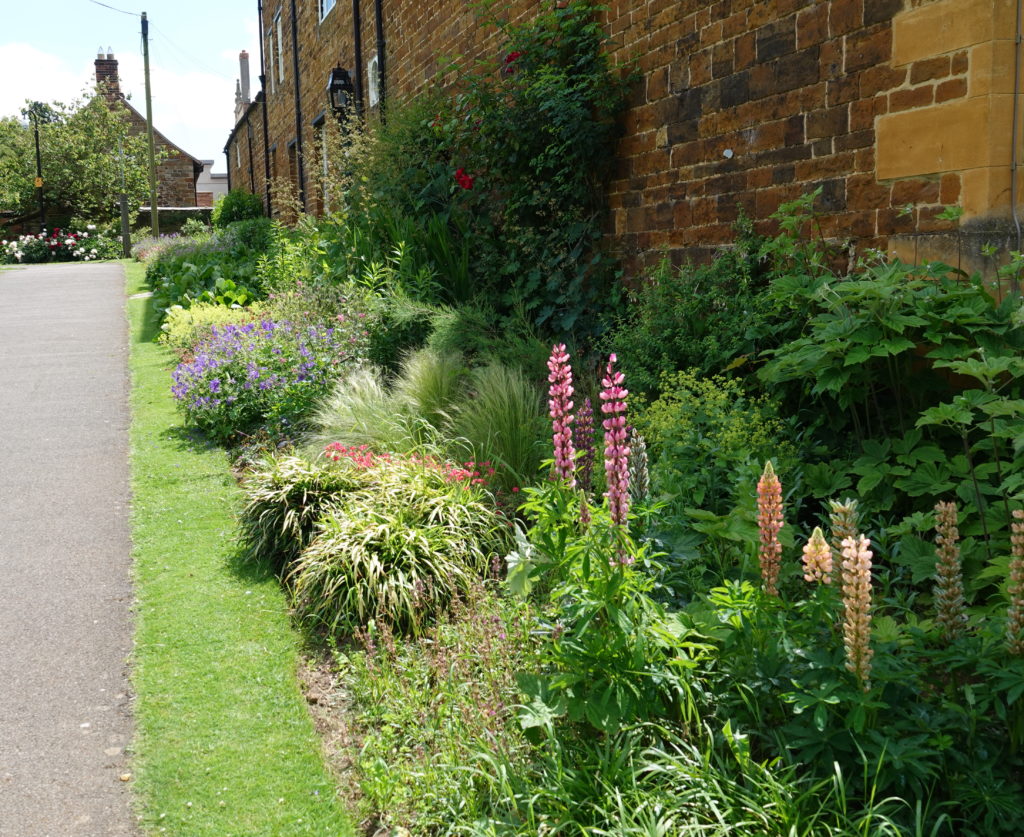
It is full of mysteries. For instance, there’s a statue of a nude woman with a fish between her knees…
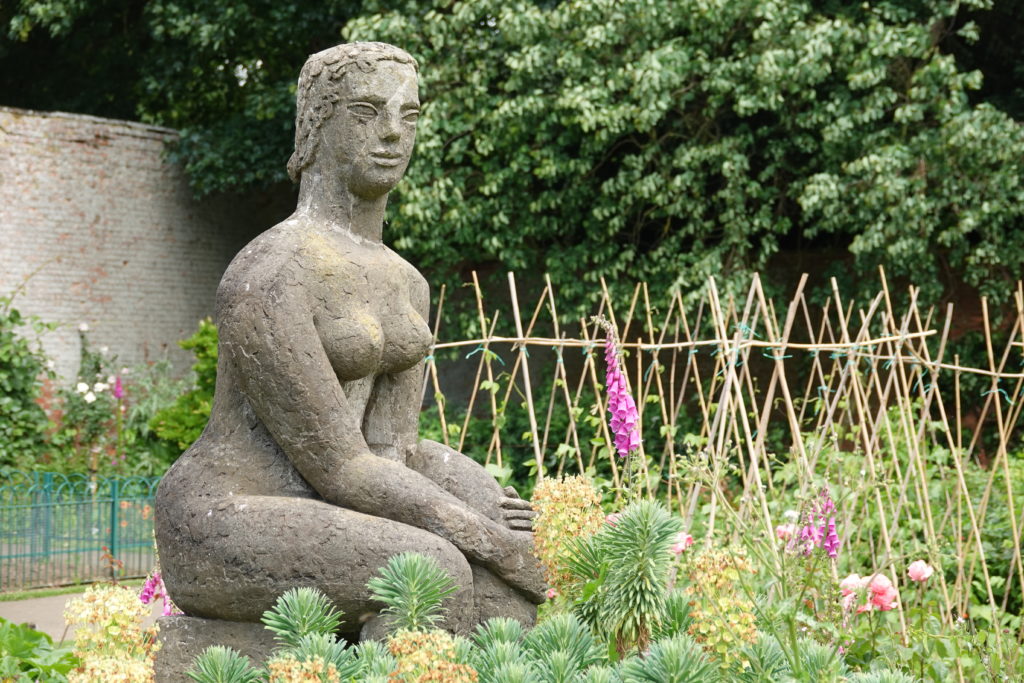
… disturbingly ambiguous topiary…

… a statue of a guy with a spade dressed looking far too well dressed to be a gardener…

… and of course, erotic brickwork.
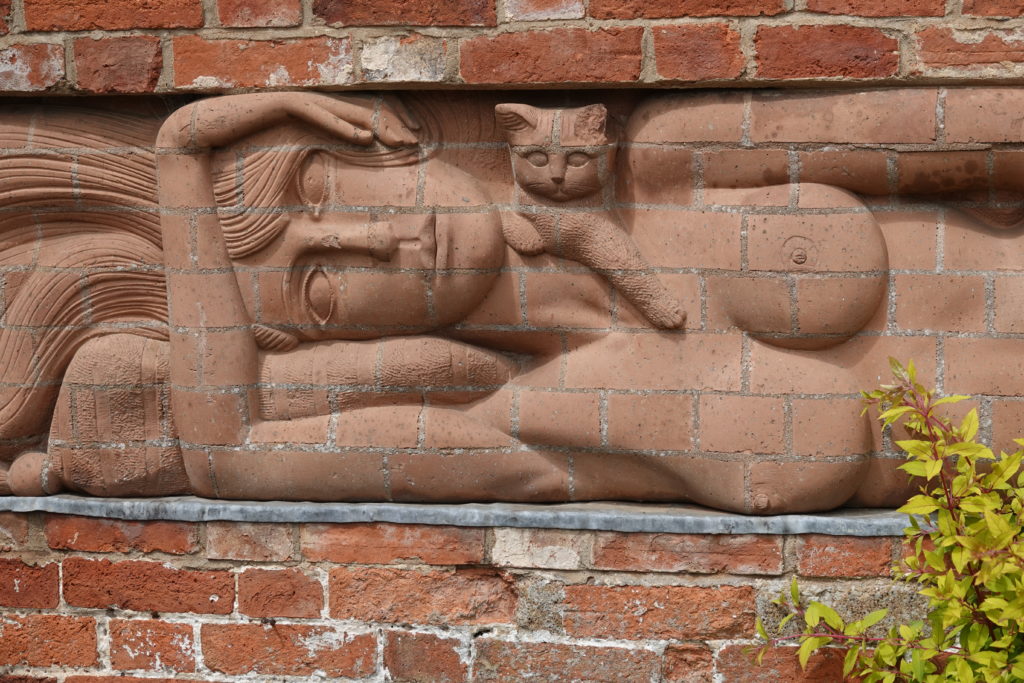
If you are beginning to think that the people of Northampton have a well developed sense of the random when it comes to the decorative arts, you would be correct. We went on to visit three buildings remarkable for their complete lack of restraint when it comes to ornamentation.
It has a statue of that well know religious icon Charles II on the front.
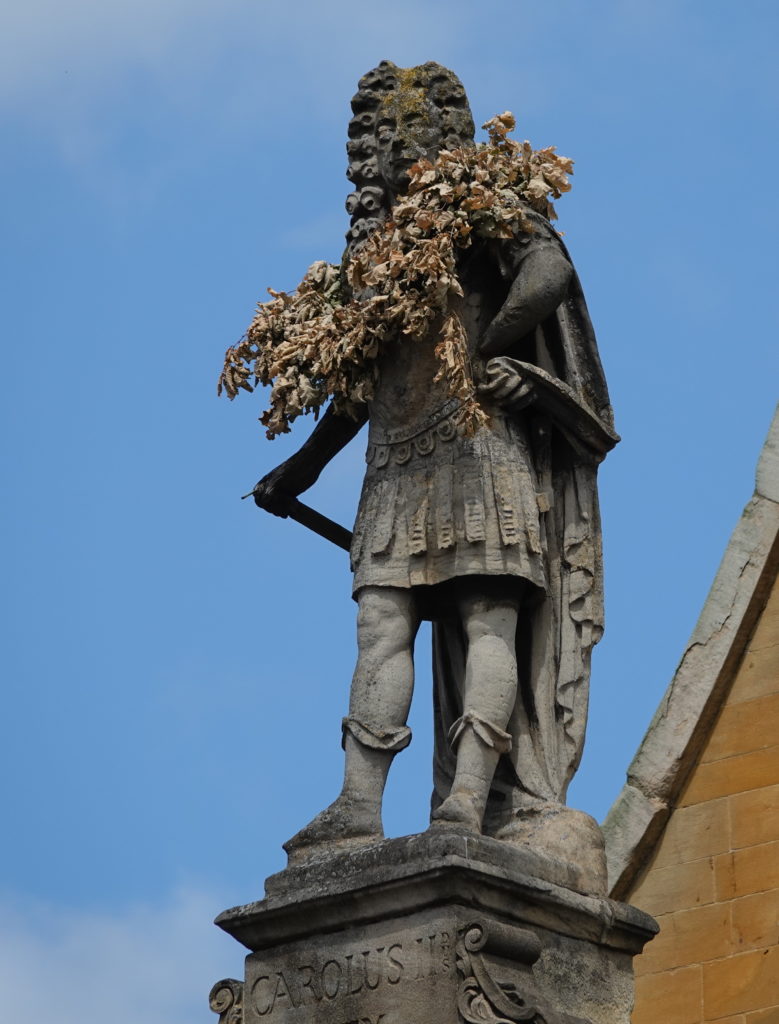
When Northampton burned to the ground in 1675, Charles II sent 1,000 tons of oak lumber to help rebuild. You’ll notice the statue is wearing a wreath of oak branches. That’s left over from May 29th, or Oak Apple Day, the anniversary of the restoration of the monarchy, when every year the statue gets a new wreath. The monarchy, politics, and religion are inextricably blended in England. This caused a lot of bloodshed in the past. For instance, in the Battle of Northampton which I promised not to talk about, one entire army was excommunicated. These days it mainly generates quaint traditions.
Ok, let’s avoid the trendy bistro that occupies most of the front portico, and step inside.
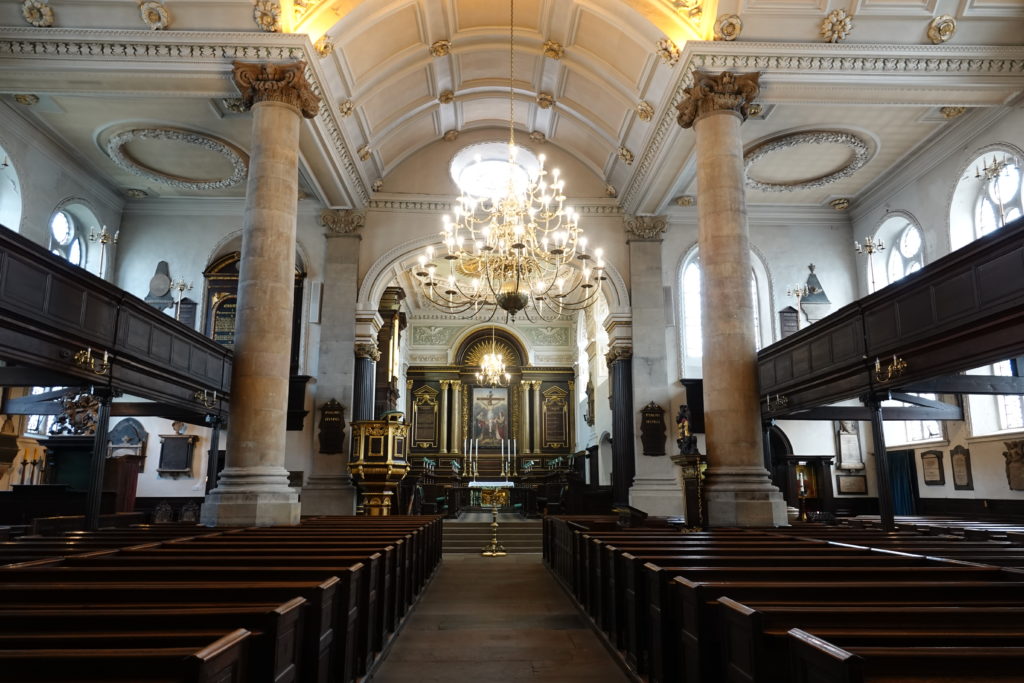
The organist was practicing while we were there.
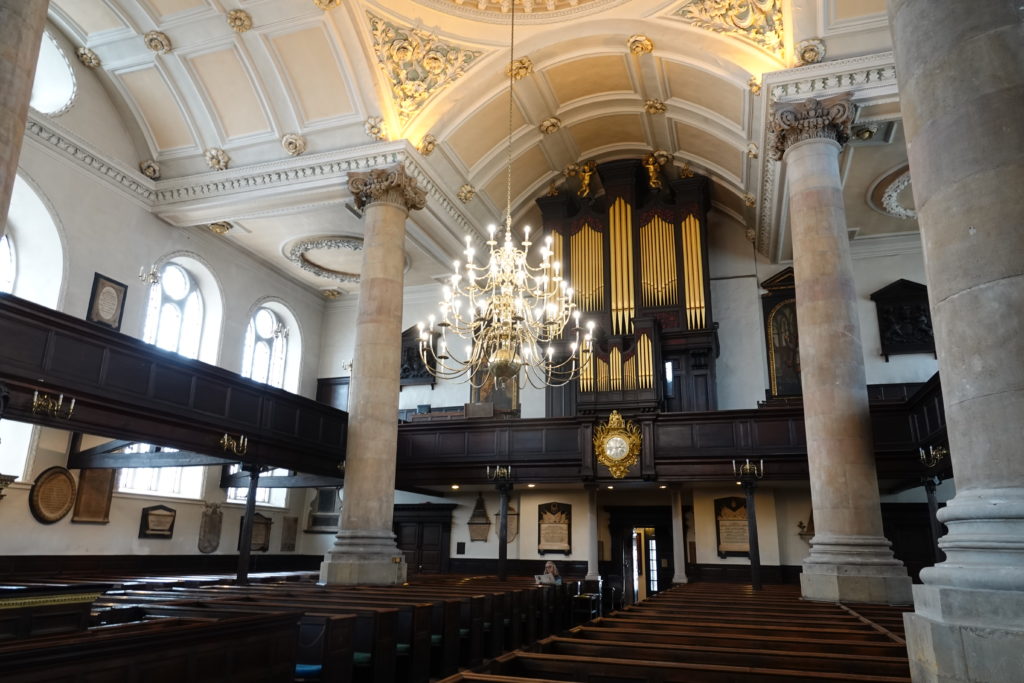
Here’s some of the ornamental details that caught my eye.
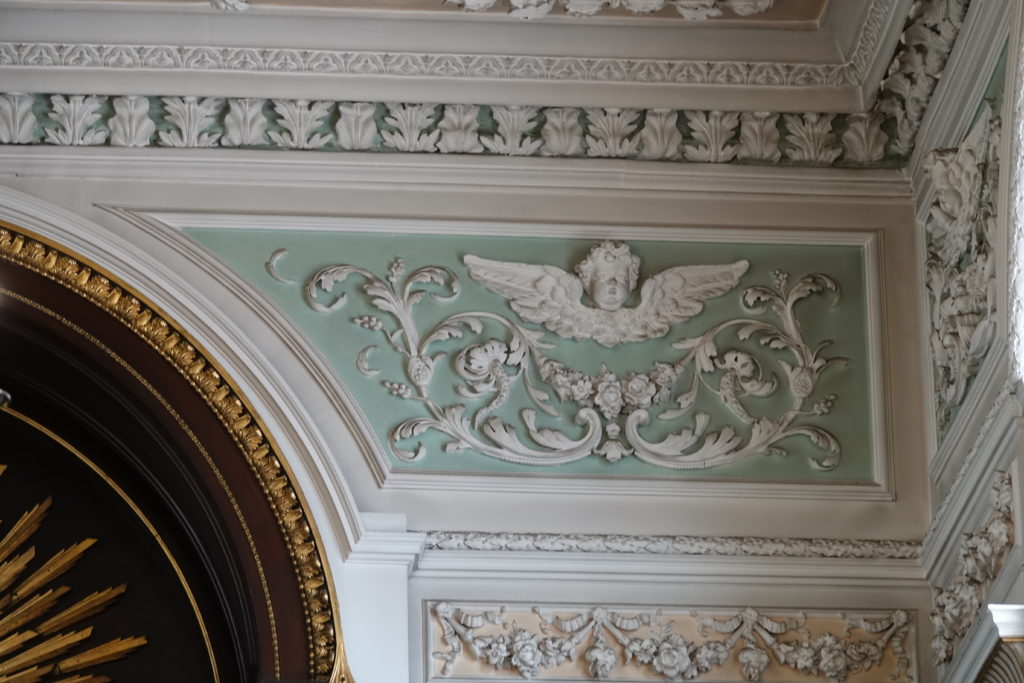
Is that gloppy enough for you? Come down the street to the Victorian gothic guildhall.

The statues are various kings and saints. This is St George of England.

They also have St Patrick for Ireland, and St Andrew for Scotland, but no St David for Wales because who cares about the Welsh.
Now let’s walk down Derngate, to number 78.
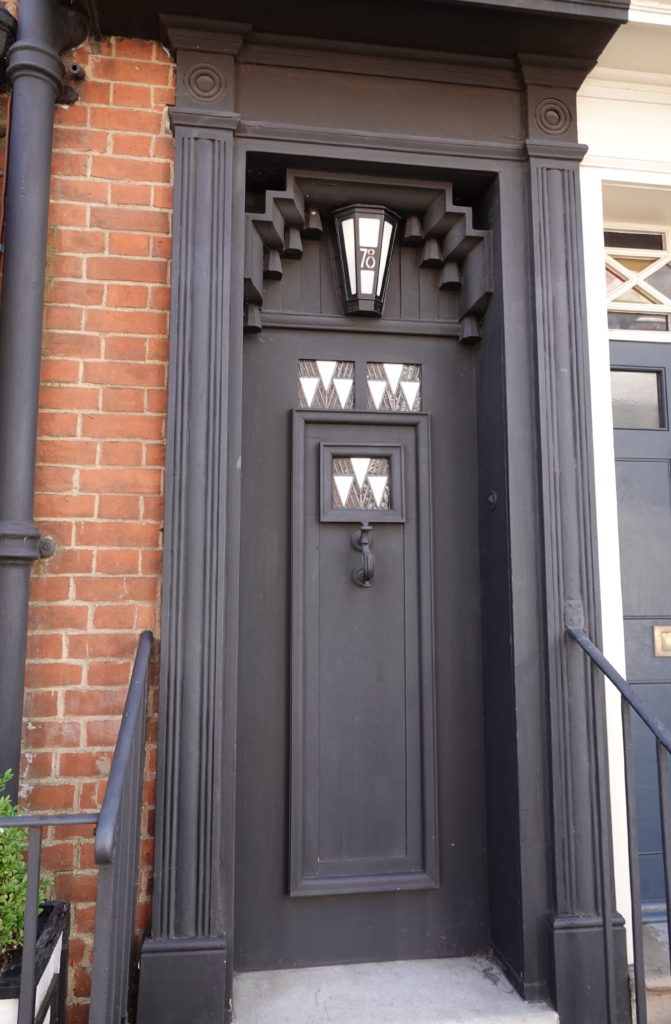
Perhaps you fancy a night in the guest bedroom.
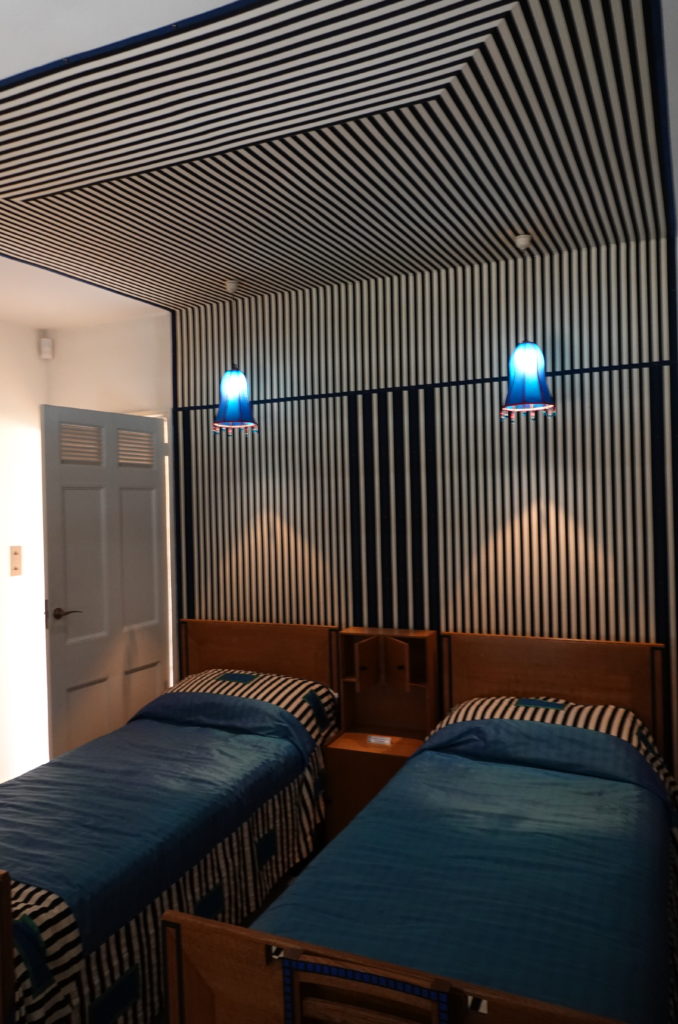
George Bernard Shaw, who stayed there a couple of times, said he was perfectly comfortable because he always slept with his eyes closed.
The house was remodeled by Charles Rennie Mackintosh, and though tiny, it still manages to cram in enough decoration for ten regular sized homes. Step into the sitting room.

The house had been lovingly restored to as near the original condition as possible, though some of the furniture is now in the V&A and other museums. They are so concerned to keep it in pristine condition that you have to wear plastic bags on your feet.
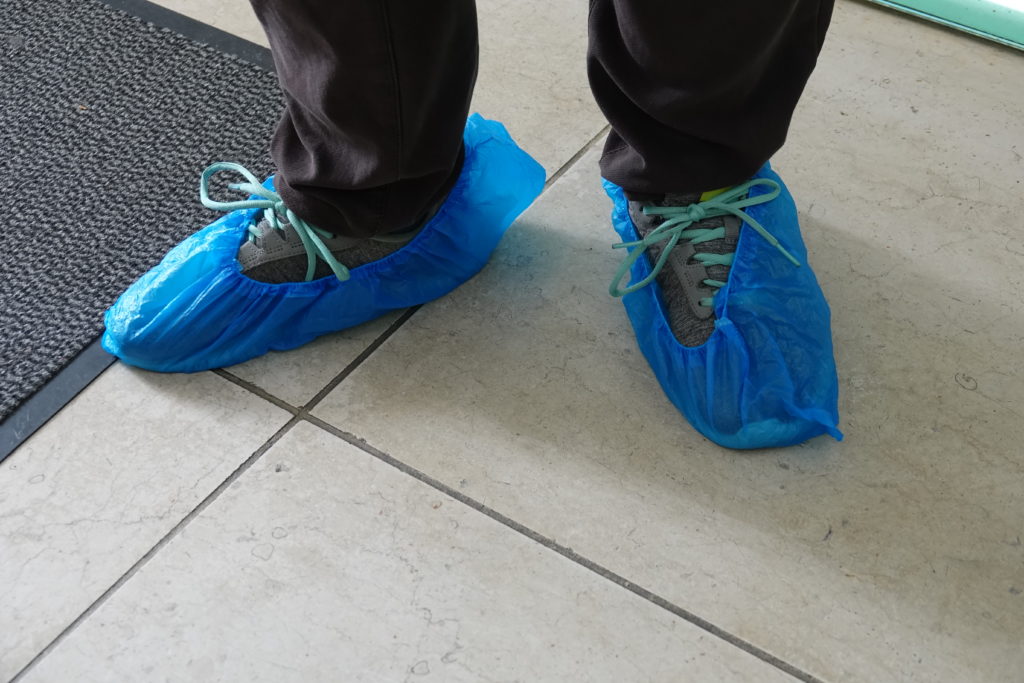
The couple who owned the house, the Bassett-Lowkes, only lived there about a decade, and then in 1926 built the first modernist house in the UK. Mr Bassett-Lowke made toy railways and other models for a living, and turned his friend George Bernard Shaw into an O-gauge railway platform accessory. Like I said, the people of Northampton have a fine sense of the random in the decorative arts.
